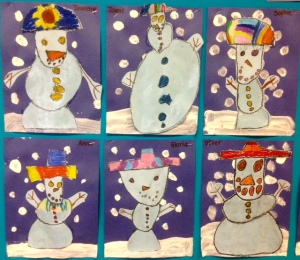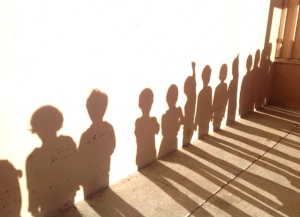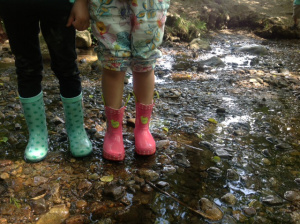 A special thing happened 15 months ago and that was the creation of our little website and teacher blog, The Self-Regulated Teacher. We never dreamed that we would have received over 12,000 views (12,398 to be exact at the time of writing) by over 6500 visitors to read what we had originally planned as one form of communicating learning for our Kindergarten classroom parents.
A special thing happened 15 months ago and that was the creation of our little website and teacher blog, The Self-Regulated Teacher. We never dreamed that we would have received over 12,000 views (12,398 to be exact at the time of writing) by over 6500 visitors to read what we had originally planned as one form of communicating learning for our Kindergarten classroom parents.
We carried this idea around for a long time, and with the help, support and encouragement of one of our BFFs, Cari Wilson, Innovation Support Teacher (Technology) for West Vancouver and our Ridgeview Principal, Valerie Brady, we published our first post in December 2014. We’re appreciative of the positive feedback from our classroom parents and others readers of this blog. Thank you for leaving us your kind comments and questions.
As we reflect on the various ways to communicate learning that we’ve used over the years, beyond the three written report cards, parent-teacher conferences and Student-Led Conferences, our primary method has been the classroom newsletter we’ve written every week since we started teaching, from Kindergarten to Grade 4 (not including the years we were Learning Support teachers). We originally wrote this by hand until recently when we’ve started to post it online.
Each and every parent group has always enjoyed, “This Week in Our Room,” to review the goings-on of the past week, with reminders for the upcoming week. We know those newsletters graced many fridges, were placed in special binders or pinned to the family bulletin board. Families tell us how they kept all those handwritten paper newsletters from the Kindergarten year as a classroom memory.
Our families need to know, and love knowing, what’s happening in their child’s school life. Supporting the children in their learning, and extending the learning at home, requires that parents have an awareness of the classroom routines, curriculum and activities. In our situation, we wanted parents to be able to take the information we provide through the newsletter, and use that as a basis for conversation beyond the ubiquitous, “What did you do at school today?” Our classroom parents are knowledgeable about what their child is doing at school, and can ask the pertinent questions to help uncover the learning gems each child knows.
We realise that our level of communication is going to be different in Kindergarten, compared to a student in the older grades. Our children are more than able to share with their parents what we do at school, but the rationale for an activity might not be as clear to them or there were too many reminders on a certain day, and we like our parents to know these things. We consider classroom communication a teaching responsibility, so if reminding our parents to send along a pair of rain boots for outdoor play, or making suggestions for reading at home, contributes to a fun and successful school experience, then we’re going to do it.
We’ve noticed an increase in the number of working parents in our classes over the years and as working parents ourselves, we wanted to improve when and how information can be accessed and technology has allowed us to do so. Working parents cannot always drop by the classroom to see the latest bulletin board display or see when it’s their child turn to be the next Special Helper. Our first foray into digital home and school communication started with the app Remind, which delivers text messages from the teacher to the classroom families from an account separate from your smartphone. It allows us to schedule Remind texts days and weeks ahead, as we think of them, and to include photos as well. We highly recommend it as an excellent method to send reminders home.
From Remind we made the jump to writing and posting the newsletter online. It’s actually easier and faster for us now, because Christy and I would meet in person or discuss by phone what we were going to write. We can write our newsletters and blog posts on Google Docs, share it with each other and we can both be reading, revising and editing at the same time (as we’re doing right now), or when it’s convenient for us, before we copy it into WordPress, our blogging platform.
We don’t necessarily endorse that a classroom website and weekly blogging is for everyone. We were already used to writing the newsletter, and looking for ways to increase our efficiency and reduce paper consumption. We now write a short blog followed by the newsletter on Fridays. We work on it over the week, adding bits of information as we think of it.
On Sunday we write a blog post that is current and relevant for what’s happening in our classrooms and at our school. These blogs take more time because of the topics we choose to write about; however, we love sharing what we’ve learned through our teaching and experience and have achieved a great sense of satisfaction and accomplishment through writing and publishing. We’re not going to romanticize blogging, though. Although I love writing and have a passion for writing, writing takes time and periodic bouts of writer’s block can seriously extend the amount of time you were planning to spend on writing one post, never mind how the rest of your evening (or day) was affected.
Our Kindergarten website focuses on school and classroom expectations and routines, and foundation learning for our students. Again, our original intention was to write a Kindergarten Handbook, a “how-to” for negotiating Kindergarten here at Ridgeview, and we decided to just have everything, our newsletters, blog and handbook information in one place, theselfregulatedteacher.com. You can read more about “Becoming The Self-Regulated Teacher” here.






















